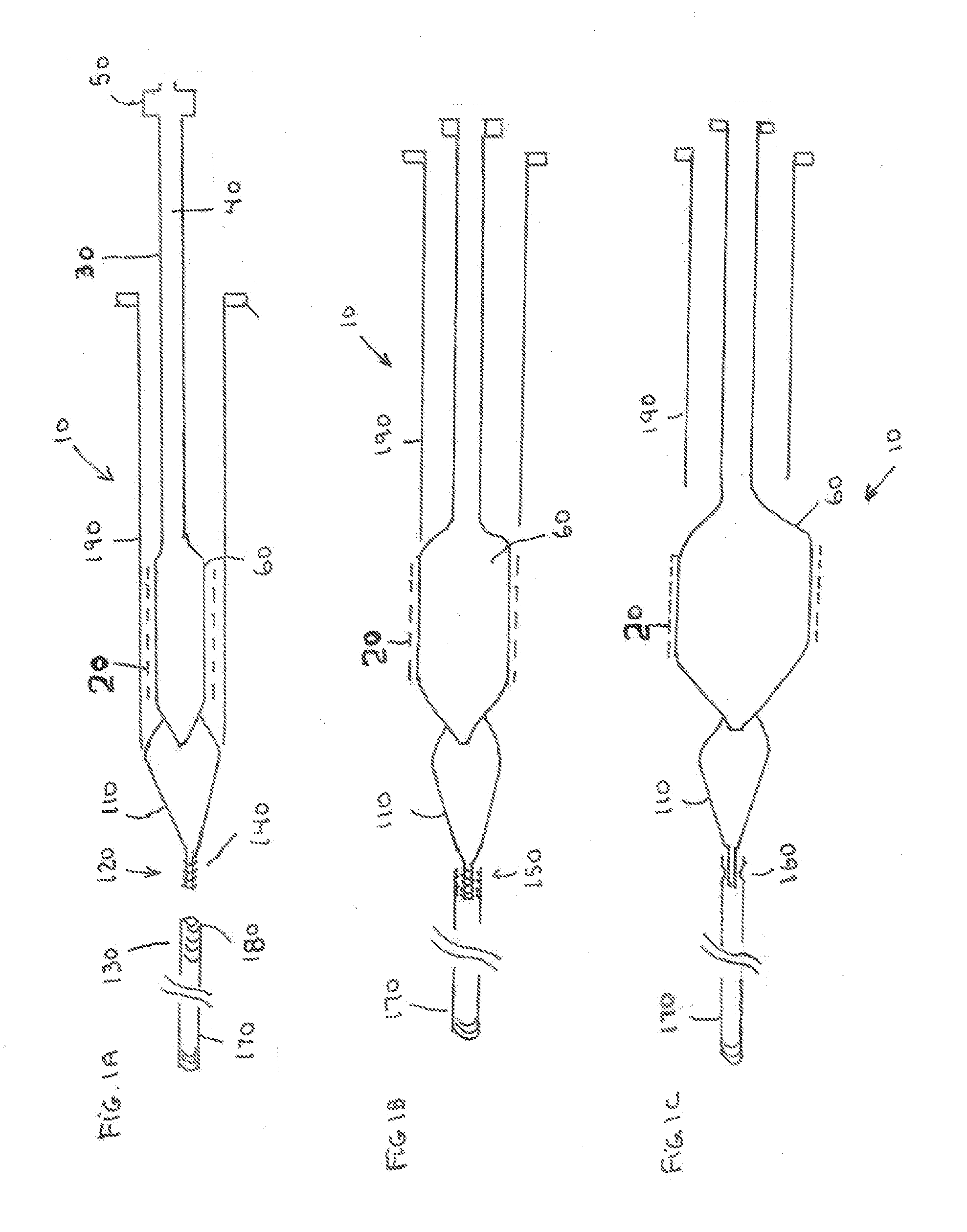Large Vessel Closure Device and Method
a technology of large arteriotomy site and closure device, which is applied in the field of interventional catheter, can solve the problems of difficult vascular closure of such large arteriotomy site following the removal of the large introducer sheath, requiring surgical intervention, and the most percutaneous closure device does not perform well to close such large arteriotomy si
- Summary
- Abstract
- Description
- Claims
- Application Information
AI Technical Summary
Benefits of technology
Problems solved by technology
Method used
Image
Examples
Embodiment Construction
[0056]The present invention as shown in FIGS. 1A-1C is a delivery catheter (10) for delivering a stent device (20) percutaneously to a vessel lumen. The use of this invention can be for delivering a stent device (20) following angioplasty or during the angioplasty procedure. The stent device (20) can be a drug eluting stent such as a balloon expandable stent or a self-expanding stent or it can be a stent graft or covered stent. One of the more advantageous applications for the delivery catheter (10) of the present invention is for the closure of a large arteriotomy site such as one made in the femoral artery for delivery of a large catheter such as a TAVI device or an AAA device. Since the standard introducer sheath used in these procedures are approximately the same size as the vessel diameter, i.e., 16-21 French, the normal vascular closure devices and methods do not work well. The present delivery catheter (10) is intended to gain access in the same femoral artery or other artery...
PUM
 Login to view more
Login to view more Abstract
Description
Claims
Application Information
 Login to view more
Login to view more - R&D Engineer
- R&D Manager
- IP Professional
- Industry Leading Data Capabilities
- Powerful AI technology
- Patent DNA Extraction
Browse by: Latest US Patents, China's latest patents, Technical Efficacy Thesaurus, Application Domain, Technology Topic.
© 2024 PatSnap. All rights reserved.Legal|Privacy policy|Modern Slavery Act Transparency Statement|Sitemap



